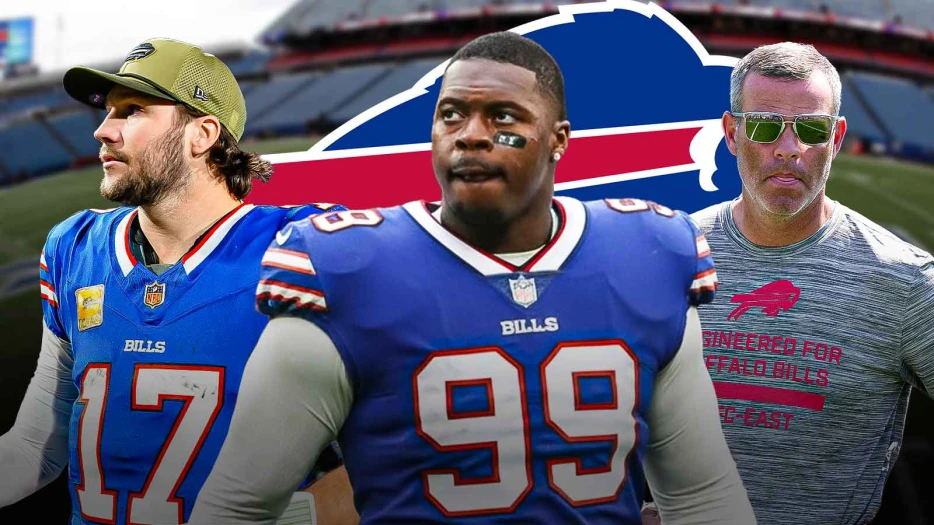
 ClutchPoints
ClutchPoints
The Buffalo Bills didn’t make a splashy move at the 2025 NFL trade deadline, and that might come back to bite them if they don’t address one of the roster’s most obvious weaknesses: the interior defensive line. After standing pat, general manager Brandon Beane needs to strike on the open market, and the best move is clear. The Bills should sign defensive tackle Deshawn Williams, a proven interior disruptor who’s still available and would immediately upgrade their defensive front.
The deadline came and went without Buffalo fixing the issue that has haunted them all season, a lack of consistent pressure up the middle. Analysts from Sports Illustrated and ESPN agree the Bills’ top post-deadline priority isn’t wide receiver or cornerback. It’s strengthening the trenches, particularly after struggling to stop the run and collapse pockets against AFC contenders.
Williams signed with the Bills on a one-year deal in March 2024 but was waived as part of roster cuts on Aug. 27, 2024. He later resurfaced on practice squads and active rosters elsewhere, but as of 2025, he remains a free agent. That background actually increases his appeal.
Williams spent training camp in Buffalo and learned Sean McDermott’s terminology and rotations. That makes him plug-and-play in a way that most other external signing wouldn’t be. In November, teams want a player who can step in and not need weeks of installation.
Teams often waive veterans late in camp because of positional depth, rookie priorities, and cap gymnastics, not necessarily because the player lacks talent. The Bills’ defensive-line room in August 2024 was crowded; Williams lost a numbers game more than a talent sweepstakes.
With midseason wear and tear, Buffalo’s line could use rotational help now. Williams’s familiarity and reasonable price expectations make him an efficient short-term answer that doesn’t mortgage the future.
The Bills’ defensive line has talent but not balance. Bills have plenty of talent on the edges; Greg Rousseau, A.J. Epenesa, and Joey Bosa can all win one-on-one. The problem is inside, where the team has relied heavily on Ed Oliver and DaQuan Jones without a consistent rotational piece to keep the pocket collapsing.
Williams isn’t a flashy name, but he plays with leverage, stays gap-sound, and flashes penetration that creates pressure lanes for the edge. That allows the Bills to generate more four-man pressure, cut down on blitzing tendencies, and keep linebackers cleaner in coverage —a domino effect that improves the secondary and the pass rush simultaneously.
Williams would rotate behind Oliver and Jones, giving Buffalo depth and the ability to rotate without losing interior push late in games.
Financially, the move makes sense if the opportunity arises. The Buffalo Bills don’t need another long-term, cap-heavy contract, but targeting a player like Williams would be the smart play.
The smart approach is a short, incentive-laden deal that protects Buffalo’s cap space while giving Williams a platform to rebuild market value. That structure...